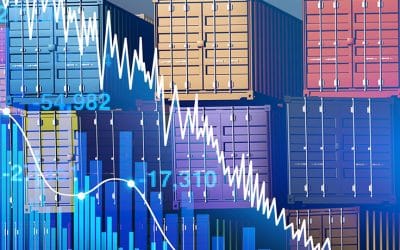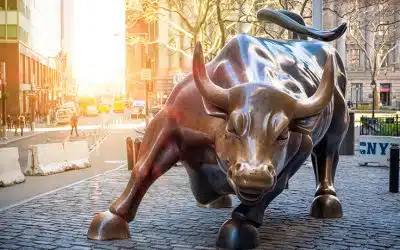What are the new safe-haven assets?

Redacción Mapfre
The outlook is more uncertain than investors expected a few months ago. The war started by Russia in Eastern Europe has upended analysts’ forecasts regarding the pace of recovery, inflation, and monetary policy put in place to control the price level. The fear in the markets is such that no one dares to enter with the same confidence as before, and this leads to uncertainty and, as a consequence, volatility.
Central banks are focused on doing everything possible to bring inflation back to sustainable levels of around 2%. According to Javier de Berenguer, financial markets analyst at MAPFRE Gestión Patrimonial, the measures being taken are “the opposite of the well-known QE seen over the last 10 years” and “include a strong withdrawal of money from the market and from the economy and, presumably, interest rate hikes to the neutral level that will curb demand (via credit and via savings) and thus cool the economy as a whole.”
The expert adds to the latter that the reduced purchasing power of households, “driven by the generalized increase in prices and the reduction in the levels of savings achieved during the periods of lockdown,” has led to greater risk aversion.
As a consequence, this fear has crept into the markets. Equities have not ceased to cause surprise in both Europe and the Americas for several weeks now. Experts in the United States already assume that the main selective markets are in a bearish environment after several consecutive weeks in the red. On the other hand, selective markets continue to be heavily influenced by external factors such as energy supply and supply chain disruptions.
But fixed income, the safe-haven asset par excellence, has seen its most cautious profiles in the red in 2022; the most defensive positions have lost more than 12% so far this year, one of their worst starts of the year. Nevertheless, since the announcement of the rate hike by the Federal Reserve (which also sees how inflation is close to moderating), some green shoots have appeared in this asset class. Still, no product is safe from the tsunami of recent months.
Against this backdrop, the more prudent investors are looking for assets that, in addition to generating returns, stand up to the various risks that can destabilize the market.
- Core sovereign bonds (Germany and the United States)
These are the safe-haven asset par excellence at the moment and where investors tend to take refuge when storms gather in the markets “because of the high likelihood that they will pay and their level of liquidity,” says Javier de Berenguer. He also acknowledges that bonds “have already suffered greatly in recent months” and that, although we cannot predict the future, “at these yield levels they are starting to show some decorrelation with equities.”
In addition to US and German core sovereign bonds, the fixed income asset class also includes “protection through high-credit-quality corporate bonds with nearby maturities.”
- Strong currencies
In terms of currencies, the dollar is the benchmark currency for trade and in the financial markets. Throughout the year, following to the Federal Reserve’s swift decision to withdraw money from the economy and the markets, and despite the wide range of risks that plague the major economies, the greenback “has risen strongly, even to the point where potential parity with the euro is being discussed,” explains the MGP analyst.
However, he says that the dollar’s trend “will depend a lot on how the economy behaves on both sides of the Atlantic and, mainly, in which region inflation will stay higher for longer, forcing the corresponding central bank to act more rigorously.”
Historically, other currencies have provided investor security in uncertain economic environments. For Berenguer, these could be “both the Japanese yen and the Swiss franc” in the current context.
- Gold
Recognized as the most faithful representative of the so-called “real assets,” the expert adds that gold is also used as a safe haven by investors. Its biggest drawback, he acknowledges, “could be the fact that it does not generate revenue or cash flows and that its only source of profit comes from asset price appreciation.”
- Equities
Assets such as those mentioned above and equities are not exempt from volatility. For the latter, although they present higher risk, there is also a specific safe haven within this asset class known as the defensive sectors: “Basic necessities, health, and public services, for example,” says Berenguer.
The choice of these sectors is no coincidence. They are made up of companies that have the following shared characteristics:
- Inelastic Demand: demand remains stable regardless of the final price.
- Stable and more predictable revenue.
- As a consequence of the above two points, and the advanced stage of maturity in these sectors, they tend to have higher dividend yields.
In the current environment of rising financial costs, the analyst also includes companies with “strong margins, low debt levels, and a strong position in their sector, factors which allow them to pass on cost increases to the final price.” In his view, “these can serve as a cover against downturns in the market.”
Nevertheless, he stresses that “an investor’s best friend is the long term.” Contrary to popular belief, “it is the best cover against risk and offers us a higher probability of gains and a lower probability of loss,” he explains. But this will only be true, according to the expert, as long as the portfolio is sufficiently diversified and adapted to the risk profile of each investor.



